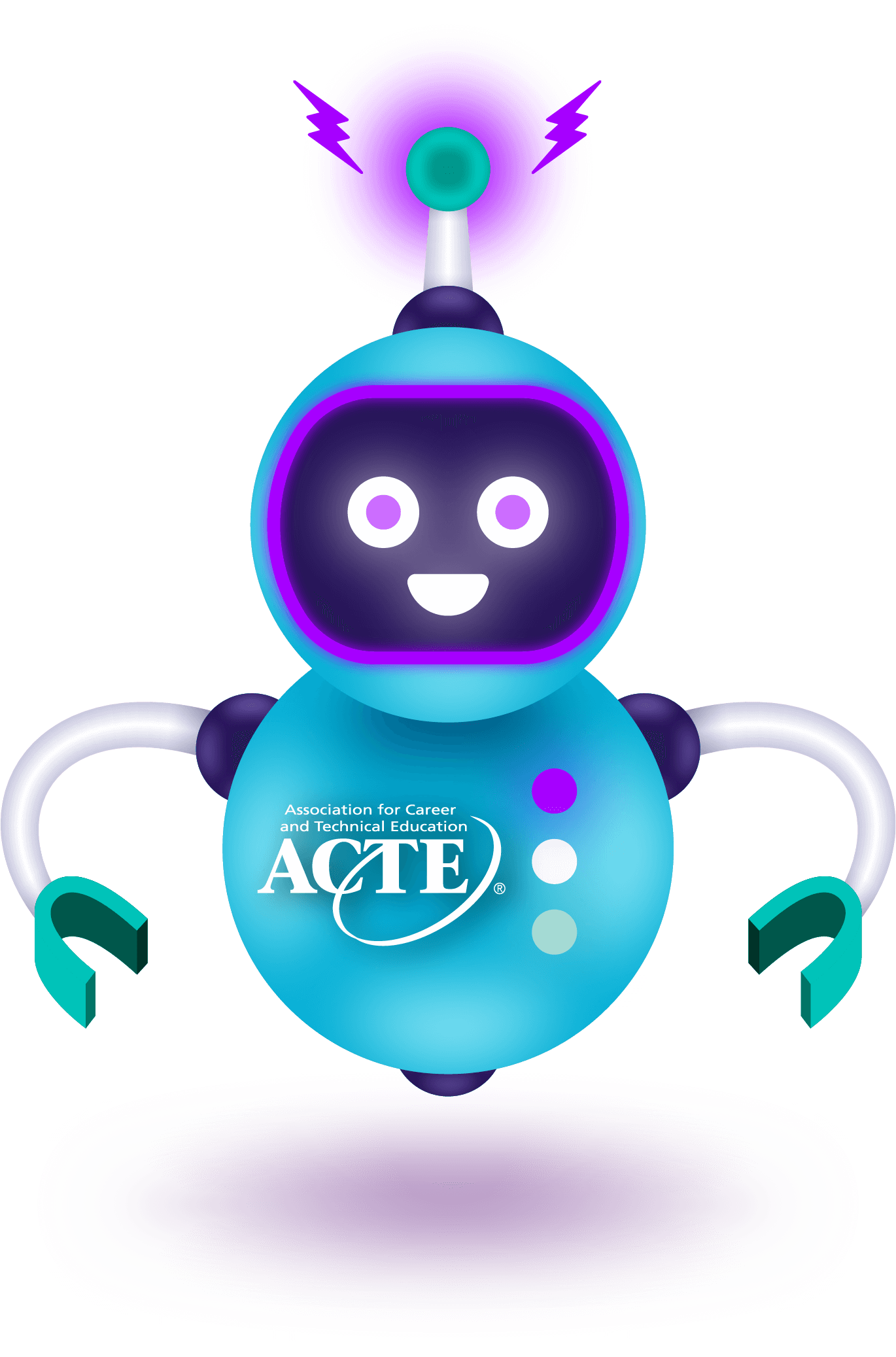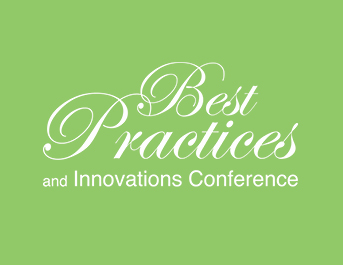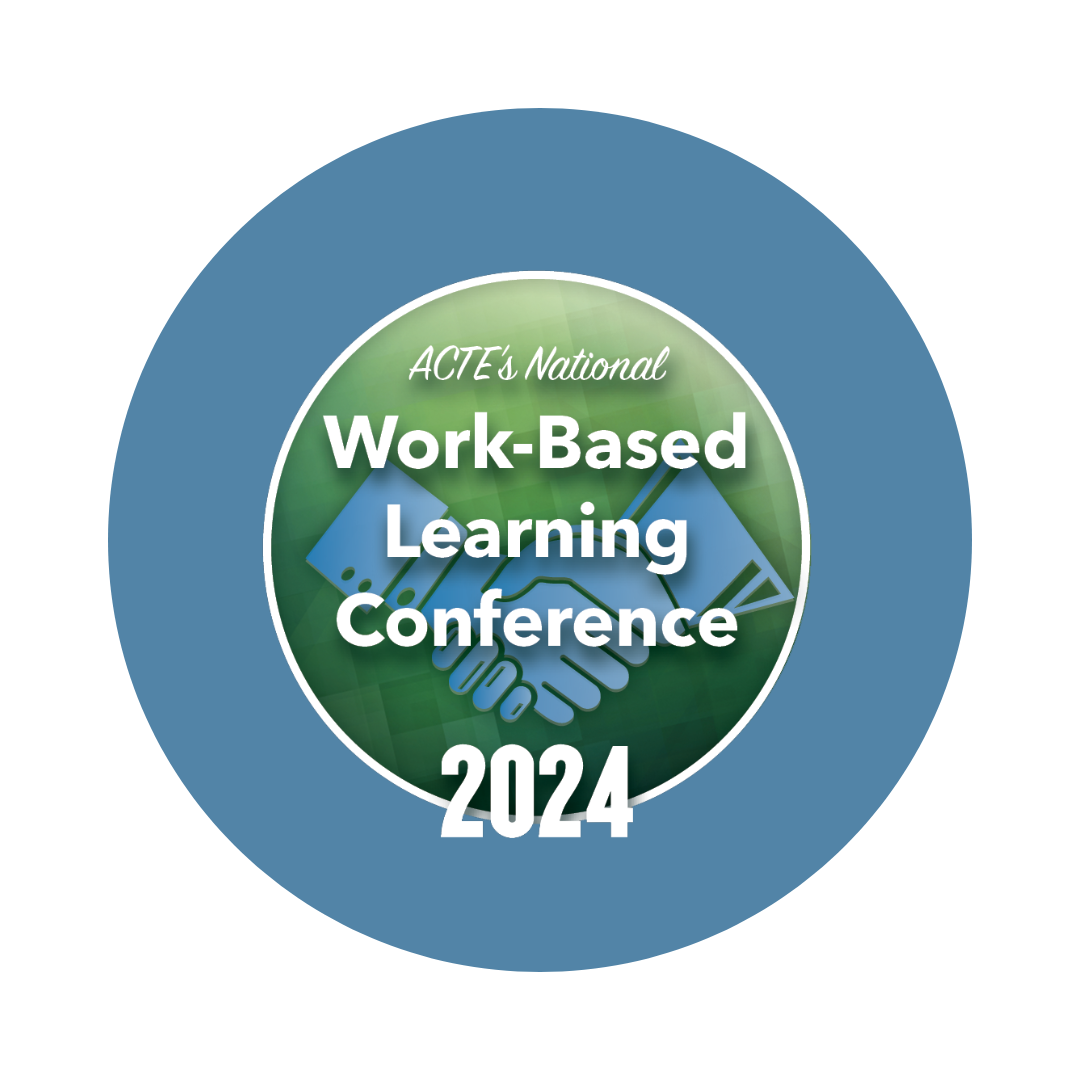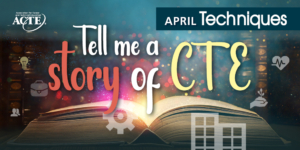Author: acte
Tips & Tools for CTE Mentorship Success
Mentorship experiences are critical to the future of career and technical education (CTE). Organizations can make a positive difference in the retention of quality practitioners through cultivating and prioritizing mentorship program.ming. The impact of structure, culture and buy-in from stakeholders can have far-reaching implications — thus improving teacher experiences and positively impacting student achievement. In their book on The Adult Learner, Knowles, Holton and Swanson contend that adult learners should be active participants in creating and executing their learning experiences.
Mentorship program success is dependent on the engagement of its participants.
Don’t underutilize talent with the potential to effect change. Recruit talented teachers of CTE to participate in mentor-ship programs, and make sure they know exactly what’s expected of them. There must be structure to the mentorship experience. Secondly, be intentional when pairing mentors and mentees. This can be done using a survey or another discretionary process to gauge participants’ strengths and areas of growth. Jane Briggs (2008) found that a thoughtful pairing of mentors and mentees is a significant factor in the success of mentorship experiences among stakeholders.
When mentorship programs are launched during onboarding and/or pre.service processes, not only will mentees benefit from having a familiar face to approach when questions arise, but mentors offer first impressions of support and may grow their own networks. As new teachers of CTE come to the classroom from different pathways, it can be challenging to learn and understand curricula, learning management systems, and organizational culture. McAdoo (2018) found that CTE teachers’ perceptions of professional development needs varied based on experience level, school type and enrollment. Mentorship programs allow organizations to easily provide customized, one-on-one professional development.
Maximize the impact of mentorship.
The organization’s role is to facilitate the infrastructure of mentorship engagement. Assessments conducted to measure men-tor–mentee engagement throughout the experience can help all stakeholders reflect on programmatic successes and revise activities as necessary (Dessinger, Moseley >amp; Van Tiem, 2012). Mentorship program activities may include meeting during standard planning times (or flexibly as participants require), webinars, book studies, local industry tours, and more.
Mentors are essential to fostering success for new teachers of CTE subjects. To retain qualified instructors, they need to see their place and potential within an organization. Mentors provide mentees with individualized support regarding profession.al growth. And this advice should be given through the lens of organizational, curricular and professional understanding.
Mentors are a vital component of positive.ly impacting the retention of practitioners that need support in understanding. But, for mentors to use their influence and expertise to assist and guide mentees, they also require support. Grant mentors should access to relationship-building resources. And give them dedicated planning time to prepare for mentor–mentee experiences. Further, mentors should be active participants in the program’s assessment and revision processes.
Successful mentors will play an active and engaged role from the outset. Mentors should speak and introduce themselves to mentees during the onboarding process. When this happens, and participants listen actively — getting to know each other — they can customize and personalize their future experiences.
Offer feedback that is fluid, considerate >amp; respectful to all participants.
The goal of successful mentorship programs is to cultivate and sustain interest among new teachers of career and technical education. Mentees come in many forms: college graduates entering the workforce for the first time; individuals seeking second-career opportunities; educators transitioning to CTE from other content areas; or individuals transition.ing from industry. Regardless of the entry point, mentees should feel empowered to provide honest and authentic feedback regarding their mentorship experiences.
Quality mentorship programs establish spaces where voices and perspectives can be heard without judgment, and successful mentorship programs will foster this type of communication. Transformational growth has the potential to boost performance outcomes beyond expectations. For this to occur, design thoughtful mentorship programs.
Key takeaways:
- Develop a mentorship organizational structure.
- Be intentional when selecting and matching mentors with mentees.
- Find and/or develop measurement tools to assess program performance.
- Allow mentors early access to onboarding experiences with mentees.
- Provide dedicated mentorship engagement time for mentors and mentees.
- Develop protocols that promote clear and consistent feedback.
Charlie E. McAdoo II, Ed.D., is a 20-year veteran teacher in the City Schools of Decatur, Georgia. in Decatur, Georgia. Under the guidance of CTE Director Duane Sprull, he serves as an active member of the Decatur High School Career Academy’s CTE advisory board and as department chair of Beacon Hill Middle School’s CTE department. McAdoo completed his undergraduate degree at Clark Atlanta University, his graduate degree from the University of West Georgia, and his doctorate from Valdosta State University.
Read more in Techniques.
Score the Discounted VISION Rates
Don’t miss out on discounted VISION rates! Register today! ACTE’s CareerTech VISION is the must-attend event for career and technical education (CTE) professionals! Happening Dec. 4–7 in San Antonio, Texas, VISION offers attendees:
- Hundreds of concurrent sessions covering high-quality secondary and postsecondary CTE
- Inspirational keynote speakers sharing innovations in CTE
- CareerTech Expo with hundreds of exhibits, workshops and live demonstrations
- Numerous networking opportunities to forge meaningful professional connections with educators and industry leaders
VISION offers unparalleled networking and and high-quality professional development, covering secondary and postsecondary CTE and stories of successful education and business collaborations.
ACTE’s premier annual conference attracts thousands of secondary and postsecondary career and technical educators, business leaders and industry professionals from around the world. Attendees enjoy featured keynote speakers and leaders on our main stage, hundreds of concurrent educational sessions and networking events in a variety of formats, a CareerTech Expo and more!
The concurrent educational sessions offer fresh insights and cover timely topics in high-quality secondary and postsecondary CTE. Also in specific content areas, including agricultural education, business and marketing, career academies, counseling and career development, family and consumer sciences, engineering and technology, health science, trade and industrial education, work-based learning and more!
Register today to secure the advance discounted rates! See you in San Antonio!
Attend Best Practices in the PNW
Best Practices is an event designed especially for CTE leaders. The Best Practices and Innovations Conference is an annual event co-hosted by the National Council of Local Administrator (NCLA) and ACTE. In 2024, it takes place Oct. 9–11 in Portland, Oregon.
There’s still time to register for Best Practices!
Administrators of both secondary and postsecondary CTE programs will engage in high-quality professional development. This year’s event will feature a high-quality agenda with insights on:
- Instructional leadership
- Mentoring CTE teachers
- Best practices
- Marketing your district
- Tech skills and CTE
- Business and industry partnerships
- And much more!
Opt Out of Print
If you would like to opt out of receiving Techniques in the mail, please update your subscription preferences in your member profile. Members who opt out will continue to receive the digital Techniques newsletter sent out each publication month and will have access to the full PDF edition of each Techniques issue.
- Current members can log in to their ACTE accounts via acteonline.org and click on Hi [First Last Name] to access their profiles
- Then click on My Demographics and select the pencil icon to update preferences (scroll down for Preference for Techniques magazine subscription)
Read Techniques online.
Warm Welcomes & Thank Yous
Help ACTE welcome the newest members of the board of directors (effective July 1, 2024).
- Carrie Giles, President
- Robert Torres, President-elect
- Chaney Mosley, Past President
- Sandra Adams, Administration Division Vice President
- Lavyne Rada, Agricultural Education Division Vice President
- Brooke Kusch, Counseling and Career Development Division Vice President
- LaDonna Selvidge, Health Science Education Division Vice President
- Shawn Freie, Postsecondary, Adult and Career Education Vice President
- Dustin Davis-Austin, Region II Vice President
- Craig Statucki, Region V Vice President
We also wish to say thank you to our outgoing board members.
- Scott Stone, Past President
- Eric Ripley, Administration Division Vice President
- Robert Torres, Agricultural Education Division Vice President
- Teresa “Gibby” Gibbons, Counseling and Career Development Division Vice President
- Holly Strand-Rysgaard, Health Science Education Division Vice President
- Kristina Rospos, Postsecondary, Adult and Career Education Vice President
- Beth Parks, Region II Vice President
- Shani Watkins, Region V Vice President
Learn more about getting involved with the ACTE board of directors.
NEW! Techniques Submission Form
Submit your story ideas for Techniques!
Attend the WBL Conference
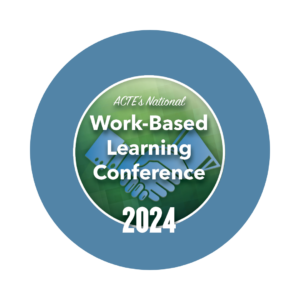 Attend ACTE’s Work-based Learning (WBL) Conference 2024! This annual event, which sold out last year, offers focused professional development for WBL professionals in secondary and postsecondary CTE programs and institutions.
Attend ACTE’s Work-based Learning (WBL) Conference 2024! This annual event, which sold out last year, offers focused professional development for WBL professionals in secondary and postsecondary CTE programs and institutions.
WBL Conference 2024 happens May 1–3 in Milwaukee, Wisconsin!
Participants will gain access to a wealth of WBL resources, and they will learn how effective networking can enhance high-quality work-based learning experiences. Join us and more than 1,000 CTE professionals as we build strong business and community connections and robust learning experiences for students. In Milwaukee, Wisconsin, we will gather to discuss the hottest topics in work-based learning, network with colleagues and industry partners, and hear from exciting keynotes.
Diamond Don: Telling Stories That Matter
This is my CTE story.
When I started high school, I was a solid academic student; however, I lost my way. I began to struggle academically because I was too busy chasing girls, success in sports or popularity. Over time this approach left me feeling disconnected. I didn’t feel like I fit in anywhere. I became a loner. And by junior year, my GPA dropped to 1.9.
Suddenly, I was going nowhere fast. Then I learned about a radio station course offered through my high school’s CTE program. I had always been interested in radio, so I signed up.
Creating a lifetime of learning
Nothing was more exciting than going to my fifth hour CTE course every day and playing around on the radio station. Creating elements for different radio programs. Creating assets and drops and stingers. As I entered my senior year of high school, a good friend and I got our first radio show! On Monday nights, 8:00–10:00 p.m., we played house music and mixes. We took live calls and gave shoutouts, and it was fantastic!
Our radio show broadcast for a six- to 10-mile radius around the school. That low-powered FM station had an outstanding reach when I think about it. It was the most exciting time of my life.
My CTE story: The radio station gave me a reason to go to school.
While I was in high school, the Specs Howard School of Media Arts came to give a presentation. (The school is now part of Lawrence Technological University.) At the time I was struggling and unsure about what my next step was going to be. But their talk stood out in my mind. And I knew that, somewhere in my journey, I would go to this school. I knew I wanted to continue training in this field that I had grown to love so much in a short time.
Thanks to the encouragement and dedication of a fantastic teacher, with whom I’m still friends, I graduated from high school with a 2.2 overall GPA. I made it out, barely.
Learning what not to do
I needed postsecondary counseling and real career direction that I never received. I only went to college because someone had seen me play football and thought I could benefit their team. Turns out, I didn’t make it past football camp. And I was committed to a school I never wanted to attend. I skipped a ton of classes. I did absolutely no classwork. There was a lot of partying and drinking, and in certain moments, my outlook was dark and depressing.
By November, I was back home with my parents. I remember my mother said, “You can live here, but you better be working.” So, I worked jobs in retail; for the city’s forestry department, trimming trees and chipping bushes and branches; and as a janitor. After a while, I realized what I needed to do. I needed to go to Specs Howard.
I had no idea what I would find as I continued my education in radio. What I found was my village. I found people doing something that they loved.
Once, I submitted an audio production to a statewide broadcast contest sponsored by a local conference. I spent all day working on that submission, making the smallest changes. My instructor sent me back and forth to the lab. And when I got frustrated, he would look at me and say, well, if you want to win, this is what you got to do. He was right. Plus, I truly loved what I was doing. I submitted the work, and I took second place.
I went from skipping high school and college classes to never missing a day. In fact, I was only late three times. My previous C+ average became an A by the time I graduated from Specs Howard. Even on my off days, you could find me in the audio lab area, experimenting with editing and mixing sound. At graduation, I remember the director of education calling me the “hardest working man in radio.”
At Specs, I got my first internship, which led to my first part-time job in radio as a board operator on Saturday and Sunday mornings. It was here where I met my first African American teachers, whose feet I sat at every single day. Representation does matter. It was the first time I ever saw people who looked like me in front of me, teaching.
Telling my CTE story
From there my life opened. My first full-time job was off-air in a major market. This then led to me moving away from home and working full-time on-air in a medium market. Later, I came home to go back to college. This time with direction, purpose, and nine credits that would transfer thanks to an articulation agreement. I spent the next 10 years going to school part-time while working full-time at Specs Howard, teaching what I loved.
My skill set began to grow. I took the experience I had gained into the public school district, where I worked as the program director, audio production director and liaison for their public radio station. Later, I became a digital media producer for the district; I developed video vignettes for the communications department.
Eventually, I re-enrolled at Specs Howard and got my digital media certification. Then I took a job as the director of multimedia for a local high school CTE program. I went back to school again, got a Master of Business Administration, and met my future wife.
Now I am a national CTE trainer for CAST; a second-year doctoral student focusing on curriculum and critical social inquiry; and a postsecondary leadership fellow studying diversity, equity and inclusion. Thanks to career and technical education, I found my self-esteem. I became a creative. I expanded the boundaries of what I could do, and I have never “worked” a day in my life. CTE gave me all of this. All I had to do is say these words on-air back in high school: “88.3 WSHJ. This is Diamond Don, and you’re in Dance Mix 86.”
Donald Walker is a CTE educator and a former radio DJ.
Read more in Techniques: Tell Me a Story of CTE.
Connect Students With Careers That Fit
Scheduling and placement challenges are a systems problem, a disconnect between CTE program awareness and the mechanics of course scheduling. Here we’ll look at two examples — from Oregon and Kansas — of successful, systematic approaches to helping students discover their interests and aptitudes and learn about related career pathways.
Henley Middle School and Henley High, Klamath Falls, Oregon
“This is my 16th year in education,” said Adam Randall, CTE coordinator and instructional coach at Henley High School. “And by far the best time spent has been in CTE.” Randall has worked at Henley for the past six years, and as full-time CTE coordinator since 2020. Previously, he taught engineering and advanced math at another high school and also supported the CTE programs on a part-time basis. He was an engineer before he came to teaching.
Randall said that the former principal, Jack Lee, saw the trends toward workforce preparation and CTE and pushed hard to develop new programs for students. Lee advocated for hiring a CTE coordinator. Because he knew that principals and teachers had too many other responsibilities to do this work effectively.
Discovering what you’re good at
So, the school teams developed a comprehensive process to assess students’ interests and aptitudes in eighth grade. Then they would use the results to guide high school recruitment work for Henley’s CTE programs.
In January or February, all of the district’s eighth graders take the career aptitude assessment across two or three class periods. Students use technology to identify 25–30 careers that match with their aptitudes and about which they want to learn more. Then they collaborate with teachers, administrators, and their families to discuss and narrow down their pathways. Students also learn about the CTE programs and other opportunities at the high school, and how those programs might relate to those career options.
Students keep all these items documented on a planning document called the “Forecasting Draft,” and the word “draft” is emphasized continuously. Randall said, “So many students and families worry, like, well, if I choose engineering as my number one, then that’s engineering for the rest of my life. And I tell them, ‘No, no, you’re not making a forever decision. You’re making a for-now decision’.”
Eighth grade students also benefit from a career exploration day at Henley High. Students are placed into groups of 15 or 16, and they rotate through approximately 12 stations, each featuring a hands-on activity. Middle school students are led by current high school CTE students, and they’re encouraged to talk and ask questions.
Shawnee Mission School District, Shawnee Mission, Kansas
Ryan Flurry is the CTE coordinator for the district and principal of the two centralized career education campuses. He has been in this role for six years and worked previously as a high school associate principal and a chemistry teacher. “It has always been a passion of mine to help students explore various career paths,” he said. “In the science classroom, I often saw students fixed on one career choice, and I wanted to encourage them to consider different aspects beyond a single option.”
Discovering what you’re interested in
At Shawnee Mission, students take aptitude assessments in seventh and ninth grade. The results help them decide which career fields to research and can guide their decision-making about course and program enrollment. Flurry and other faculty use results from the assessments and analytics to help develop awareness-building activities, such as tours and other events. They identify the pathways and related activities, then use system analytics to invite students who may be interested and/or who are traditionally underrepresented in those fields.
Shuttles facilitate students’ transportation from students’ home schools to centralized CTE locations for career fairs. Because the buses are already running. There, they can explore career pathways they may not otherwise have access to.
“We recently hosted an engineering event,” said Flurry. “We brought in students with an aptitude for engineering, connecting them with young professional engineers and college representatives. The turnout was fantastic.” Another recent event brought ninth grade students to see the fire science and first responders’ facilities. Flurry continued, “It’s about creating awareness. Many students aren’t aware that Shawnee Mission has a fire science program, and that they can graduate and potentially get hired at 18.”
Additionally, they will cross-reference the families’ contact information. “This allows us to send emails to both students and their family members.” Flurry noted the importance of connecting directly with families. “It’s a collaborative effort involving the whole school community.” While he takes the lead in creating the recruitment, “our counselors are the ones sending out the invitations. They act as the face of the school.”
Tips for using career aptitudes in CTE recruiting
- Administer a high-quality, aptitude-based assessment to identify potential talents for development and career exploration. A traditional interest assessment can complement the career aptitudes assessment.
- Review assessment results and give your students adequate time to process, reflect and ask questions — in the school environment and within their home communities.
- Help students gain a general knowledge of different industries and career pathways through hands-on, engaging career exploration activities. They need to know more about how the real world works and how people in different industries work together.
- Share information with your students about the secondary and postsecondary CTE programs available to them in your region. Share this information with students’ families as well. Be proactive in your communication style.
- Host an open house at the high school and/or regional CTE center. Arrange opportunities for students to rotate through the programs offered to learn more.
- Encourage a “career-connected learning for all” approach in your school district, so every student has access to career exploration, even if they don’t enroll in a CTE program.
- Continue the career conversation at every grade level. Remind them they are only making “for-now decisions.”
Hans Meeder is senior fellow for education and workforce innovation at YouScience. Meeder is the author of The Power and Promise of Pathways and several other books. He was co-founder of the National Center for College and Career Transitions and also served as deputy assistant secretary in the U.S. Department of Education’s Office of Vocational and Adult Education.
